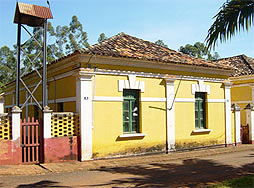 Despite the fact that many of the Italian immigrants who came here at the end of the XIX century were illiterates, they did everything possible to educate themselves, even through private enterprises. At Santa Gertrudes Farm the colonists themselves tried to solve this problem. They would gather at night at the house of those who had conditions to teach the others and there those illiterates were able to learn the first letters and numbers, besides learning general notions of many subjects.
Despite the fact that many of the Italian immigrants who came here at the end of the XIX century were illiterates, they did everything possible to educate themselves, even through private enterprises. At Santa Gertrudes Farm the colonists themselves tried to solve this problem. They would gather at night at the house of those who had conditions to teach the others and there those illiterates were able to learn the first letters and numbers, besides learning general notions of many subjects.
These classes were paid to the "teacher" either in money or in species, normally kerosene. Through the existing documentation we can verify the existence of a school at the farm on the first decade of the XX century, in 1902 approximately, being the teacher paid by the farm and receiving Rs 3$000 (Three thousand reis) per student every 2 months. In 1921 the first public school was installed using graduate teachers that could therefore perform a proper job. There were 4 classes: two of them with mixed sexes at the colonies and a masculine and a feminine class near the owner´s house. Although teachers were nominated by the government authorities, they were always indicated by the owner.
The number of classes installed at the farm shows that there should be a great number of kids attending them. However it is important to state the fact that, although parents felt the need to study, the same is not true when it comes to the children. This happened due to the importance of the children's help in the fields, both slave and immigrant children started their "professional" lives at the age of 8, and in the case of immigrant children the work would be side by side with the father or becoming familiar to the way of dealing with the coffee plats or carrying food. So the education of youngsters met some resistance because it represented less arms to work the fields.